Daniel Brinton - American Hero-Myths - A Study in the Native Religions of the Western Continent
Здесь есть возможность читать онлайн «Daniel Brinton - American Hero-Myths - A Study in the Native Religions of the Western Continent» — ознакомительный отрывок электронной книги совершенно бесплатно, а после прочтения отрывка купить полную версию. В некоторых случаях можно слушать аудио, скачать через торрент в формате fb2 и присутствует краткое содержание. Жанр: foreign_prose, История, Мифы. Легенды. Эпос, foreign_edu, foreign_antique, на английском языке. Описание произведения, (предисловие) а так же отзывы посетителей доступны на портале библиотеки ЛибКат.
- Название:American Hero-Myths: A Study in the Native Religions of the Western Continent
- Автор:
- Жанр:
- Год:неизвестен
- ISBN:нет данных
- Рейтинг книги:4 / 5. Голосов: 1
-
Избранное:Добавить в избранное
- Отзывы:
-
Ваша оценка:
- 80
- 1
- 2
- 3
- 4
- 5
American Hero-Myths: A Study in the Native Religions of the Western Continent: краткое содержание, описание и аннотация
Предлагаем к чтению аннотацию, описание, краткое содержание или предисловие (зависит от того, что написал сам автор книги «American Hero-Myths: A Study in the Native Religions of the Western Continent»). Если вы не нашли необходимую информацию о книге — напишите в комментариях, мы постараемся отыскать её.
American Hero-Myths: A Study in the Native Religions of the Western Continent — читать онлайн ознакомительный отрывок
Ниже представлен текст книги, разбитый по страницам. Система сохранения места последней прочитанной страницы, позволяет с удобством читать онлайн бесплатно книгу «American Hero-Myths: A Study in the Native Religions of the Western Continent», без необходимости каждый раз заново искать на чём Вы остановились. Поставьте закладку, и сможете в любой момент перейти на страницу, на которой закончили чтение.
Интервал:
Закладка:
The attempt has often been made to classify these various faiths under some few general headings. The scheme of Auguste Comte still has supporters. He taught that man begins with fetichism, advances to polytheism, and at last rises to monotheism. More in vogue at present is the theory that the simplest and lowest form of religion is individual; above it are the national religions; and at the summit the universal or world religions.
Comte's scheme has not borne examination. It is artificial and sterile. Look at Christianity. It is the highest of all religions, but it is not monotheism. Look at Buddhism. In its pure form it is not even theism. The second classification is more fruitful for historical purposes.
The psychologist, however, inquires as to the essence, the real purpose of religions. This has been differently defined by the two great schools of thought.
All religions, says the idealist, are the efforts, poor or noble, conscious or blind, to develop the Idea of God in the soul of man.
No, replies the rationalist, it is simply the effort of the human mind to frame a Theory of Things; at first, religion is an early system of natural philosophy; later it becomes moral philosophy. Explain the Universe by physical laws, point out that the origin and aim of ethics are the relations of men, and we shall have no more religions, nor need any.
The first answer is too intangible, the second too narrow. The rude savage does not philosophize on phenomena; the enlightened student sees in them but interacting forces: yet both may be profoundly religious. Nor can morality be accepted as a criterion of religions. The bloody scenes in the Mexican teocalli were merciful compared with those in the torture rooms of the Inquisition. Yet the religion of Jesus was far above that of Huitzilopochtli.
What I think is the essence, the principle of vitality, in religion, and in all religions, is their supposed control over the destiny of the individual , his weal or woe, his good or bad hap, here or hereafter, as it may be. Rooted infinitely deep in the sense of personality, religion was recognized at the beginning, it will be recognized at the end, as the one indestructible ally in the struggle for individual existence. At heart, all prayers are for preservation, the burden of all litanies is a begging for Life.
This end, these benefits, have been sought by the cults of the world through one of two theories.
The one, that which characterizes the earliest and the crudest religions, teaches that man escapes dangers and secures safety by the performance or avoidance of certain actions. He may credit this or that myth, he may hold to one or many gods; this is unimportant; but he must not fail in the penance or the sacred dance, he must not touch that which is taboo , or he is in peril. The life of these cults is the Deed, their expression is the Rite.
Higher religions discern the inefficacy of the mere Act. They rest their claim on Belief. They establish dogmas, the mental acceptance of which is the one thing needful. In them mythology passes into theology; the act is measured by its motive, the formula by the faith back of it. Their life is the Creed.
The Myth finds vigorous and congenial growth only in the first of these forms. There alone the imagination of the votary is free, there alone it is not fettered by a symbol already defined.
To the student of religions the interest of the Myth is not that of an infantile attempt to philosophize, but as it illustrates the intimate and immediate relations which the religion in which it grew bore to the individual life. Thus examined, it reveals the inevitable destinies of men and of nations as bound up with their forms of worship.
These general considerations appear to me to be needed for the proper understanding of the study I am about to make. It concerns itself with some of the religions which were developed on the American continent before its discovery. My object is to present from them a series of myths curiously similar in features, and to see if one simple and general explanation of them can be found.
The processes of myth-building among American tribes were much the same as elsewhere. These are now too generally familiar to need specification here, beyond a few which I have found particularly noticeable.
At the foundation of all myths lies the mental process of personification , which finds expression in the rhetorical figure of prosopopeia . The definition of this, however, must be extended from the mere representation of inanimate things as animate, to include also the representation of irrational beings as rational, as in the "animal myths," a most common form of religious story among primitive people.
Some languages favor these forms of personification much more than others, and most of the American languages do so in a marked manner, by the broad grammatical distinctions they draw between animate and inanimate objects, which distinctions must invariably be observed. They cannot say "the boat moves" without specifying whether the boat is an animate object or not, or whether it is to be considered animate, for rhetorical purposes, at the time of speaking.
The sounds of words have aided greatly in myth building. Names and words which are somewhat alike in sound, paronyms , as they are called by grammarians, may be taken or mistaken one for the other. Again, many myths spring from homonymy , that is, the sameness in sound of words with difference in signification. Thus coatl , in the Aztec tongue, is a word frequently appearing in the names of divinities. It has three entirely different meanings, to wit, a serpent, a guest and twins. Now, whichever one of these was originally meant, it would be quite certain to be misunderstood, more or less, by later generations, and myths would arise to explain the several possible interpretations of the word–as, in fact, we find was the case.
Closely allied to this is what has been called otosis . This is the substitution of a familiar word for an archaic or foreign one of similar sound but wholly diverse meaning. This is a very common occurrence and easily leads to myth making. For example, there is a cave, near Chattanooga, which has the Cherokee name Nik-a-jak. This the white settlers have transformed into Nigger Jack, and are prepared with a narrative of some runaway slave to explain the cognomen. It may also occur in the same language. In an Algonkin dialect missi wabu means "the great light of the dawn;" and a common large rabbit was called missabo ; at some period the precise meaning of the former words was lost, and a variety of interesting myths of the daybreak were transferred to a supposed huge rabbit! Rarely does there occur a more striking example of how the deteriorations of language affect mythology.
Aztlan , the mythical land whence the Aztec speaking tribes were said to have come, and from which they derived their name, means "the place of whiteness;" but the word was similar to Aztatlan , which would mean "the place of herons," some spot where these birds would love to congregate, from aztatl , the heron, and in after ages, this latter, as the plainer and more concrete signification, came to prevail, and was adopted by the myth-makers.
Polyonomy is another procedure often seen in these myths. A divinity has several or many titles; one or another of these becomes prominent, and at last obscures in a particular myth or locality the original personality of the hero of the tale. In America this is most obvious in Peru.
Akin to this is what Prof. Max Müller has termed henotheism . In this mental process one god or one form of a god is exalted beyond all others, and even addressed as the one, only, absolute and supreme deity. Such expressions are not to be construed literally as evidences of a monotheism, but simply that at that particular time the worshiper's mind was so filled with the power and majesty of the divinity to whom he appealed, that he applied to him these superlatives, very much as he would to a great ruler. The next day he might apply them to another deity, without any hypocrisy or sense of logical contradiction. Instances of this are common in the Aztec prayers which have been preserved.
Читать дальшеИнтервал:
Закладка:
Похожие книги на «American Hero-Myths: A Study in the Native Religions of the Western Continent»
Представляем Вашему вниманию похожие книги на «American Hero-Myths: A Study in the Native Religions of the Western Continent» списком для выбора. Мы отобрали схожую по названию и смыслу литературу в надежде предоставить читателям больше вариантов отыскать новые, интересные, ещё непрочитанные произведения.
Обсуждение, отзывы о книге «American Hero-Myths: A Study in the Native Religions of the Western Continent» и просто собственные мнения читателей. Оставьте ваши комментарии, напишите, что Вы думаете о произведении, его смысле или главных героях. Укажите что конкретно понравилось, а что нет, и почему Вы так считаете.
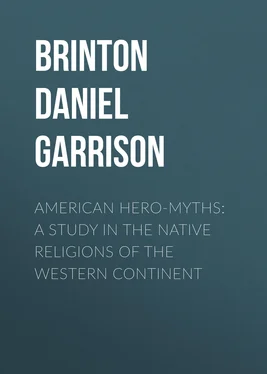




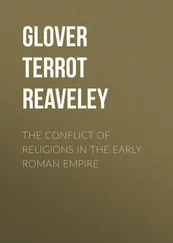
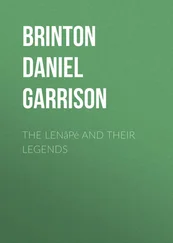
![Hubert Bancroft - The Native Races [of the Pacific states], Volume 5, Primitive History](/books/749157/hubert-bancroft-the-native-races-of-the-pacific-s-thumb.webp)
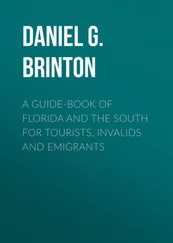

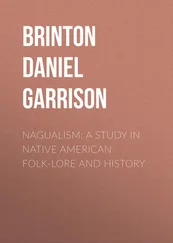
![Hubert Bancroft - The Native Races [of the Pacific states], Volume 1, Wild Tribes](/books/750126/hubert-bancroft-the-native-races-of-the-pacific-s-thumb.webp)
